Cataloguing Fred Smith Part 2: Order from chaos
In my previous blog post about cataloguing Fred Smith, I had got as far as a huge database of information about all of the papers in the collection. In this post I will describe the next stage of the process – archival arrangement.
An archivist’s job, when making historic material more accessible to researchers, is to provide information about the documents which they have gained from looking at the collection as a whole. Whilst going through the material with such close attention, I learned a great deal about Smith’s life, working habits, and the subjects that particularly interested him. This has helped to inform my ideas about the best way to organise his papers, in a way that accurately reflects how Smith worked. I began to think about some possible divisions I could make, judging from Smith’s filing. For example, he kept separate files of articles, manuscript notes and newspaper cuttings about each system of the equine body. These are most likely related to his book Veterinary Physiology, but were probably also consulted and added to as he wrote numerous articles about more specific physiological subjects. Therefore I decided that all research notes for physiological matters should be kept together.
When thinking about all this material together, it is much easier to work with physical pieces of paper. So I printed out my database and cut apart each row to represent a file.
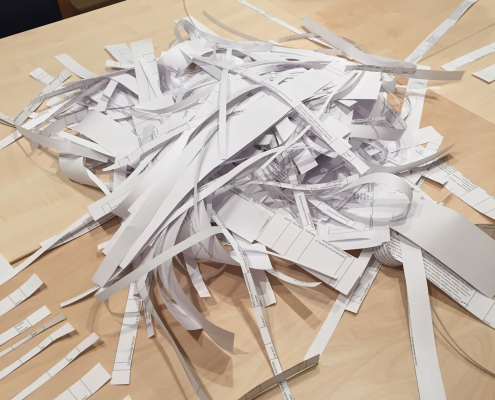
My database of information printed out, with each slip representing a separate file of papers.
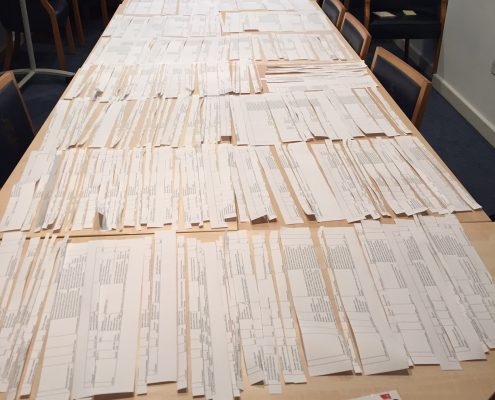
The slips filled a table in one of our meeting rooms – 299 in total!
Adele and I then divided my slips up into piles for each of my initial divisions.
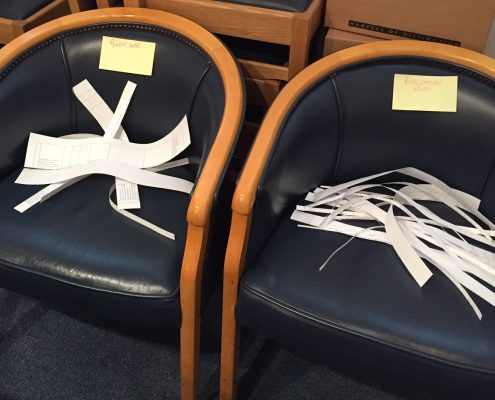
Dividing the slips into separate ‘series’ of related content.
Anything that didn’t obviously fit into one of these piles, I looked at again to get a better idea. I often find that it is necessary to make initial decisions and then see how they fit the material, and then make new decisions as a result. It is often not until you have an idea in mind, and you try to apply that in practice, either successfully or not, that you can move forward.
Once I was happy with my first collection of seven separate piles, I set about sub-dividing the largest ones. I was then heading towards proper archival arrangement.
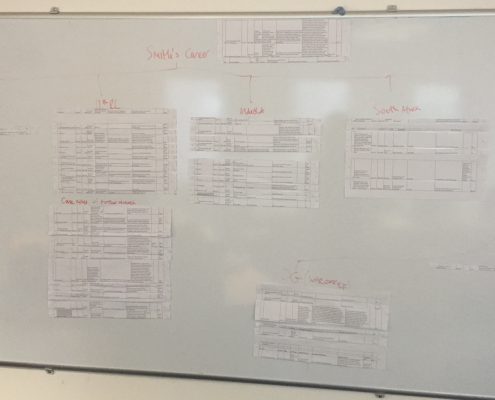
Subdividing the groups of files, to show more specific themes.
Archival arrangement is a method of organising archive documents so that a researcher can understand from the catalogue how each item relates to other items, the historical context in which it was created, and which specific items are relevant to their interests. Usually this arrangement is structured in a hierarchy, with a level representing the whole collection at the top, and then divided down into lower levels which represent smaller subdivisions, until at the bottom you have a level with single items, such as one letter or notebook. When this hierarchy is put into a catalogue, the archivist writes descriptions at each level, providing information with the appropriate amount of detail i.e. from the general to the specific.
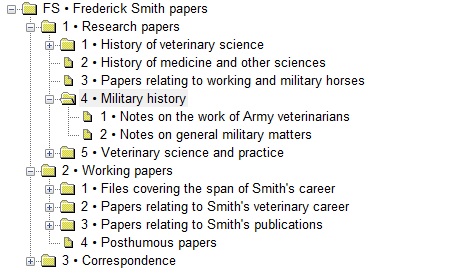
Screen-cap of the hierarchical ‘tree’ demonstrating the structure of the collection.
In the above example, the whole collection is about Frederick Smith, so at the top level I will describe what the collection contains as a whole, e.g. papers relating to Smith’s working life, in the Army Veterinary Service and as a published author, and his interaction with the veterinary profession. I have now decided to divide the collection into three discrete parts: research notes Smith accumulated for his various published books and articles; papers which were created in the course of Smith’s career as a veterinarian and as part of the Armed services; and correspondence between Smith and various other individuals. These are all divided further, e.g. within the research notes section, the papers are divided again into five ‘series’, which relate to broad subject areas Smith researched, such as military history. This series has been divided again into two ‘sub-series’: one relating to the work of army veterinarians, and the other relating to all other aspects of military activities. Within these sub-series there are multiple separate files, which were kept as files by Smith himself, and so will not be broken up. I will describe each file in detail on the catalogue, using the keywords I entered in the database. This will enable researchers to quickly find any files relevant to their interests, but from the hierarchy they can see that this file is one of several on a broader topic, and so they may want to browse through the related files. Likewise, a researcher may use a broad term for their searching, and their results may find ‘series’ level records. They will then be able to see that within the series, there are many more specific files, and being able to eliminate some files will save them valuable time. Also, if a researcher does not have to look through files unrelated to their project, it means the fragile documents are not unnecessarily handled, which also ensures better long term preservation of the material.
Now that I have created my hierarchy structure, my next few months will be spent describing the files in detail, and adding this information to the catalogue. I will talk about archival description in a third blog post in the near future.
In the mean time, if you would like to know more about Frederick Smith’s papers, please do not hesitate to contact us here at RCVS Knowledge.

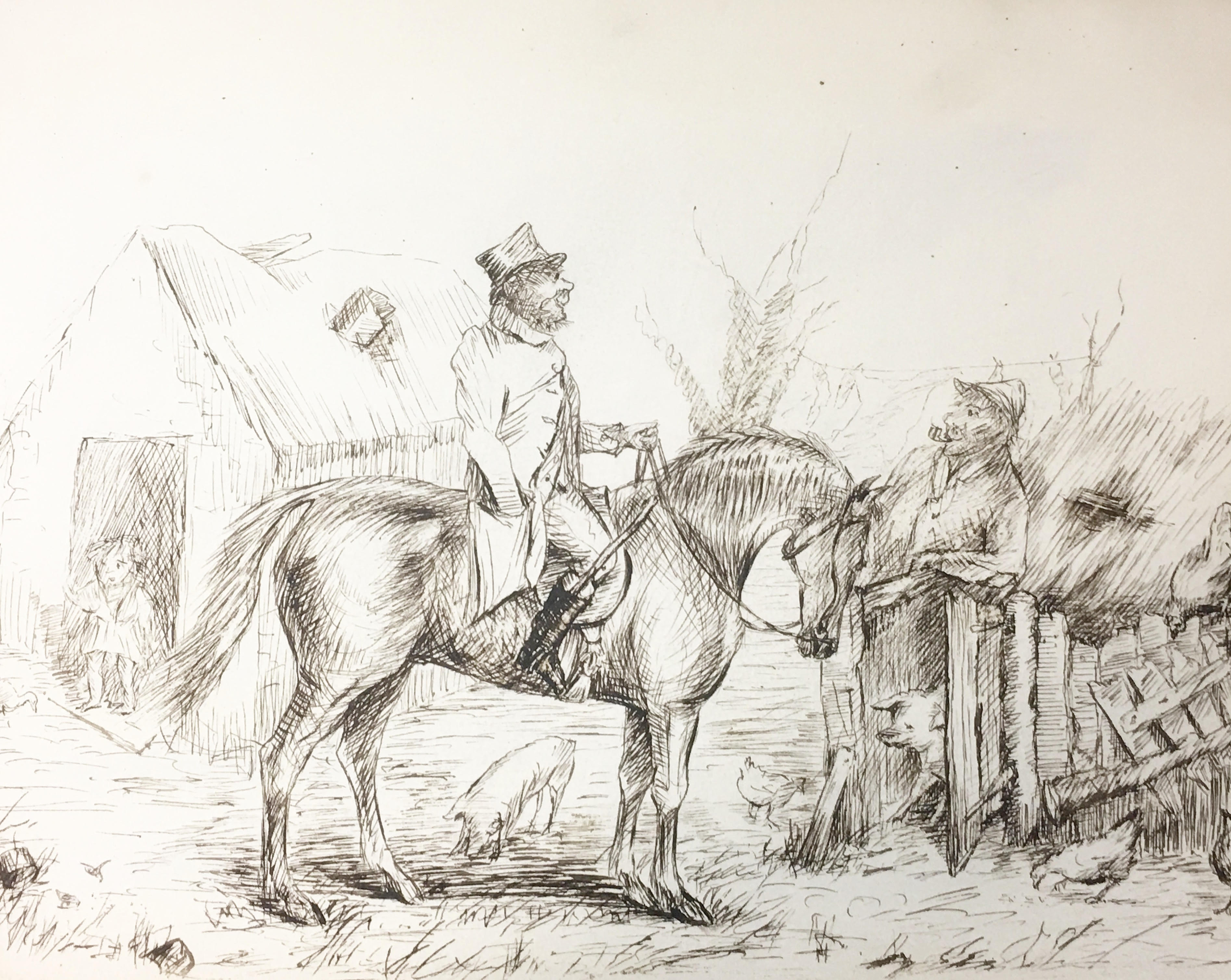
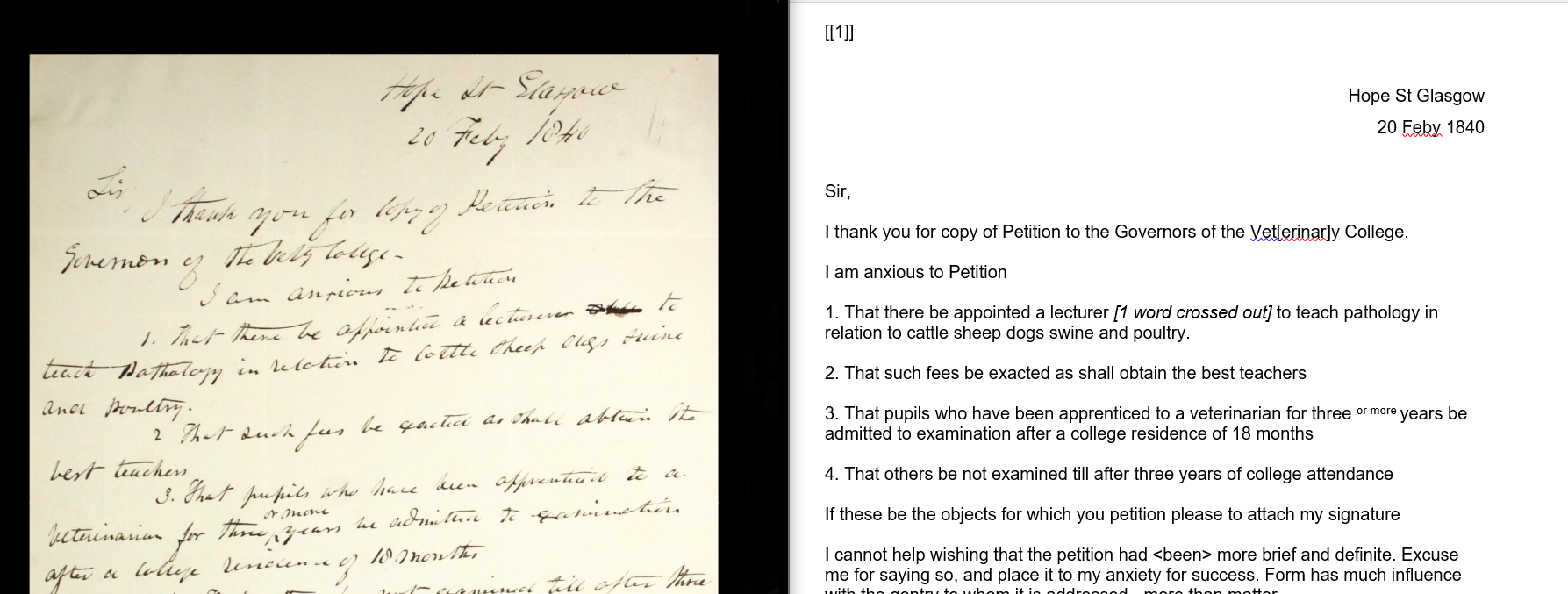



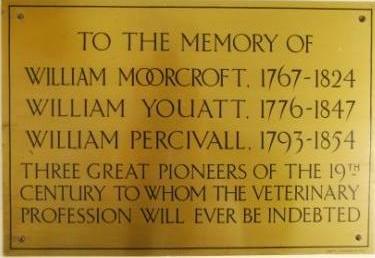
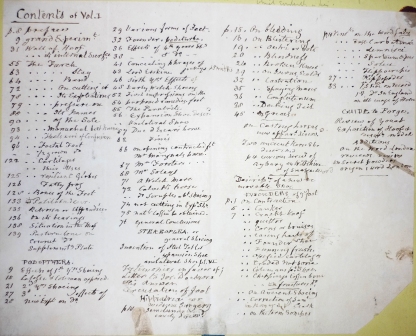
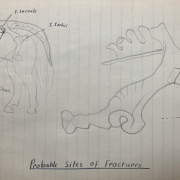
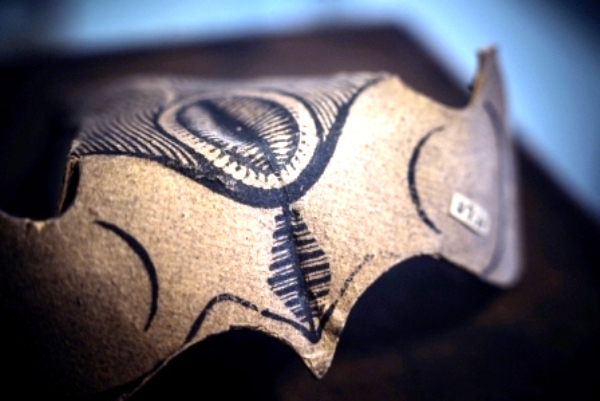
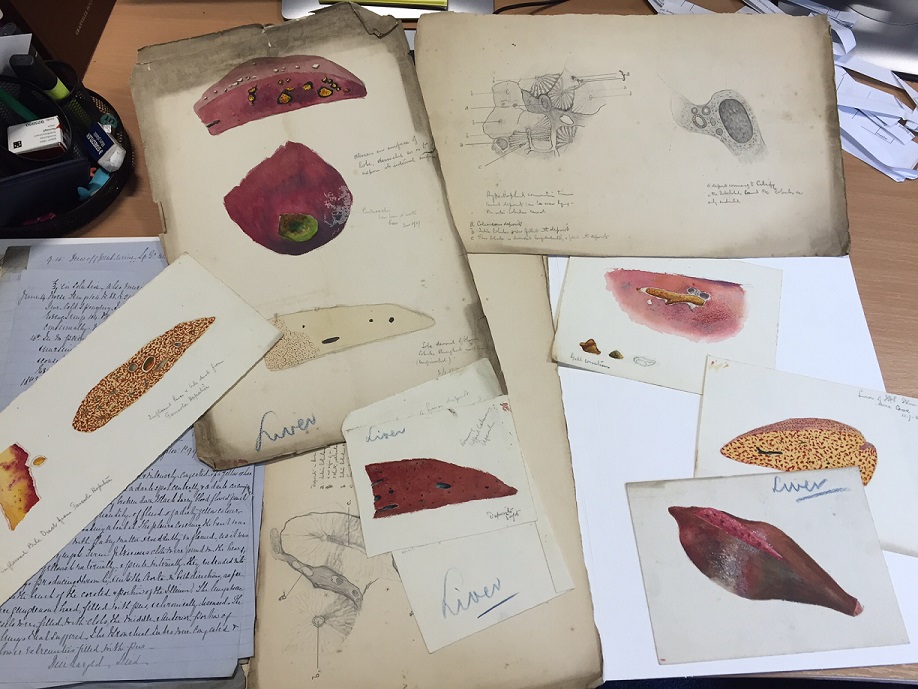
Good to see that some low-tech solutions still work. Good job nobody sneezed!
Seriously though Lorna, veterinary historians would all probably like something different to come out from this work, but very important for those of us interested in his history of veterinary literature would be any clues to his sources and references when he researched it. Where did he find the books, his biographical information about authors, and so on? So to have that information locatable and accessible as you subdivide your tree further would be marvellous.
Keep it up, it’s brilliant work.
Hi Andrew – thank you for your comment! I can reassure you that Smith’s correspondence to the Secretary of the RCVS is mostly concerned with locating sources for his ‘History of Veterinary Literature’, and checking references too. I’m working hard to make sure the relevant authors and veterinary sources are listed in the catalogue, so these can be easily located by researchers.
Absolutely gripping! What a fascinating insight into the way an archivist works, thank you for this.
Thanks for reading Niall! It can be quite a complicated process, but I hope it will help researchers understand why we arrange material in the way that we do!
Lorna, this is fascinating – getting a look at the initial organizing principles you are using for the collection and at the decision-making process. Please keep updating us as to the progress.
Thanks Nancy! I hope to get another update out more quickly than this one! But hopefully you will soon be able to see what exciting progress we’re making in between the blog posts 🙂